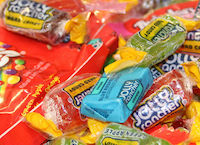When it comes to Halloween treats, self-restraint from parents and children can be tricky, but it may be necessary.
To children, Halloween might seem like the one day a year that they can eat as much candy as they want, but this could have negative mental and physical effects for them. A lot of anything can be bad for you — especially sugar.
A typical chocolate candy bar contains around 12 grams of sugar. If a child only has two, that alone would add up to be what a child’s daily intake of additive sugars is supposed to be.
“Halloween candy is a significant source of added sugar and saturated fat with few of the nutrients we need, like vitamins, minerals, fiber, and protein,” said University of Georgia Cooperative Extension’s nutrition and health specialist, Alison Berg. Some fun-sized candies have more than 10 percent of your daily allotment of added sugar or saturated fat.”
A better idea might be to space out how much candy children can eat per day. The FDA suggests on Halloween day, parents should feed their children before they go trick-or-treating, so they won’t be hungry when they leave home. Make sure they return home before they start picking out candy to eat.
Once Halloween is over, letting your child pick out one or two pieces to eat a day is a good idea that won’t overload them on sugar. The key here is moderation. If they have 5 or 6 pieces in a day, what follows could be a high blood sugar rush followed by a crash, and fluctuations in mood.
Safety is another important factor when it comes to moderating your child’s Halloween diet. Children should not eat candy that has not been commercially wrapped, and parents should try and encourage them not to accept any noncommercially wrapped candy. It is also crucial to keep an eye out for suspicious looking candy. Discoloration, small holes in the packaging and expiration dates are all signs of candy that should be avoided.
Candy that has been safely handled and is eaten in smaller portions can be a great addition to the spooky holiday.
“Enjoy your candy, but don’t eat too much of it,” Berg said. “Keep Halloween to a couple of days, versus letting it go on for weeks at a time which can result in unwanted pounds and likely a few cavities.”
For more tips on cutting back on sugar or eating a more nutritious diet, visit www.fcs.uga.edu/extension/food.




.png)
.jpg)

